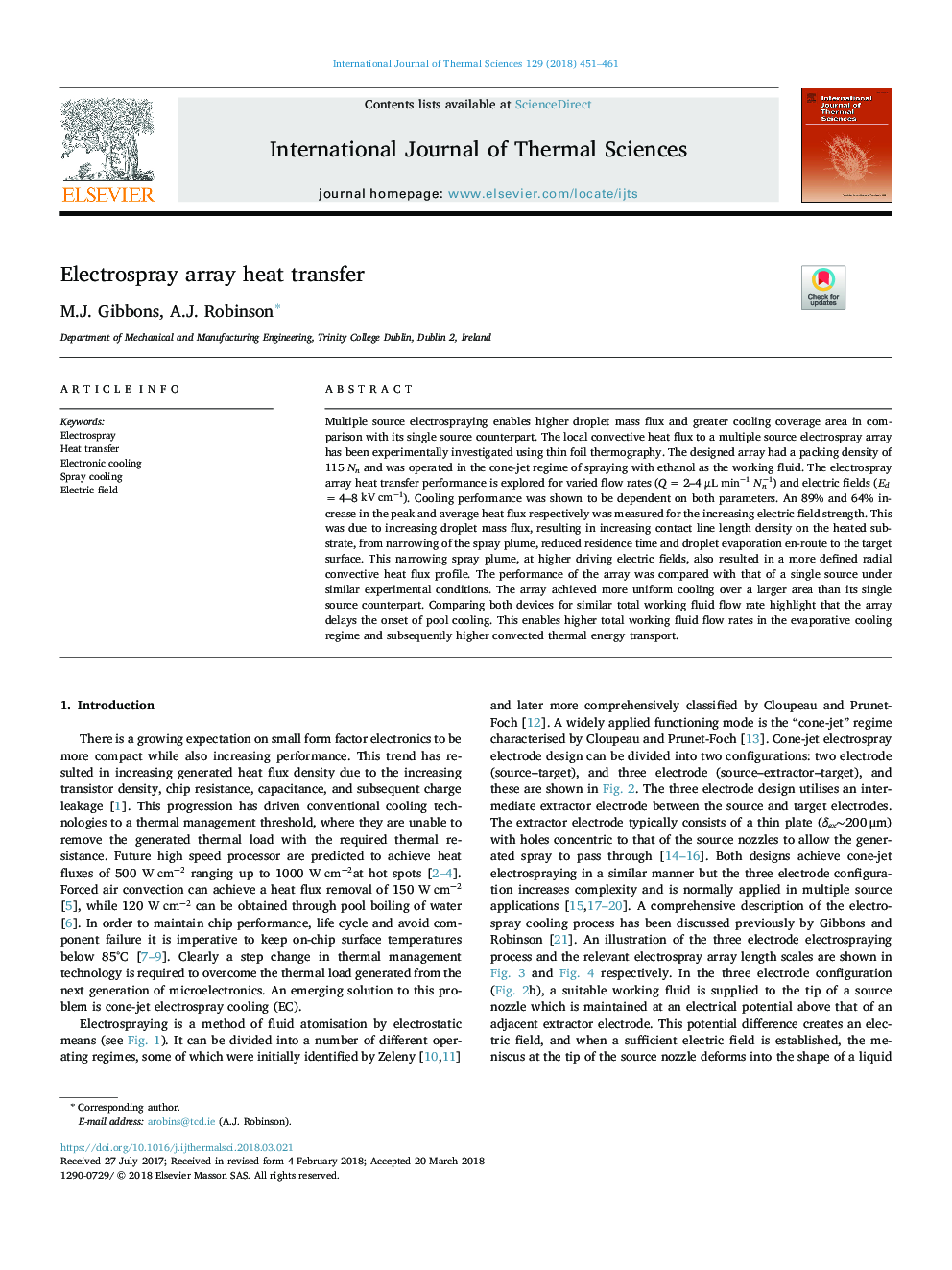| Article ID | Journal | Published Year | Pages | File Type |
|---|---|---|---|---|
| 7060739 | International Journal of Thermal Sciences | 2018 | 11 Pages |
Abstract
Multiple source electrospraying enables higher droplet mass flux and greater cooling coverage area in comparison with its single source counterpart. The local convective heat flux to a multiple source electrospray array has been experimentally investigated using thin foil thermography. The designed array had a packing density of 115 Nncmâ2 and was operated in the cone-jet regime of spraying with ethanol as the working fluid. The electrospray array heat transfer performance is explored for varied flow rates (Qâ¯=â¯2-4 μLminâ1Nnâ1) and electric fields (Ed â¯=â¯4-8 kVcmâ1). Cooling performance was shown to be dependent on both parameters. An 89% and 64% increase in the peak and average heat flux respectively was measured for the increasing electric field strength. This was due to increasing droplet mass flux, resulting in increasing contact line length density on the heated substrate, from narrowing of the spray plume, reduced residence time and droplet evaporation en-route to the target surface. This narrowing spray plume, at higher driving electric fields, also resulted in a more defined radial convective heat flux profile. The performance of the array was compared with that of a single source under similar experimental conditions. The array achieved more uniform cooling over a larger area than its single source counterpart. Comparing both devices for similar total working fluid flow rate highlight that the array delays the onset of pool cooling. This enables higher total working fluid flow rates in the evaporative cooling regime and subsequently higher convected thermal energy transport.
Related Topics
Physical Sciences and Engineering
Chemical Engineering
Fluid Flow and Transfer Processes
Authors
M.J. Gibbons, A.J. Robinson,
